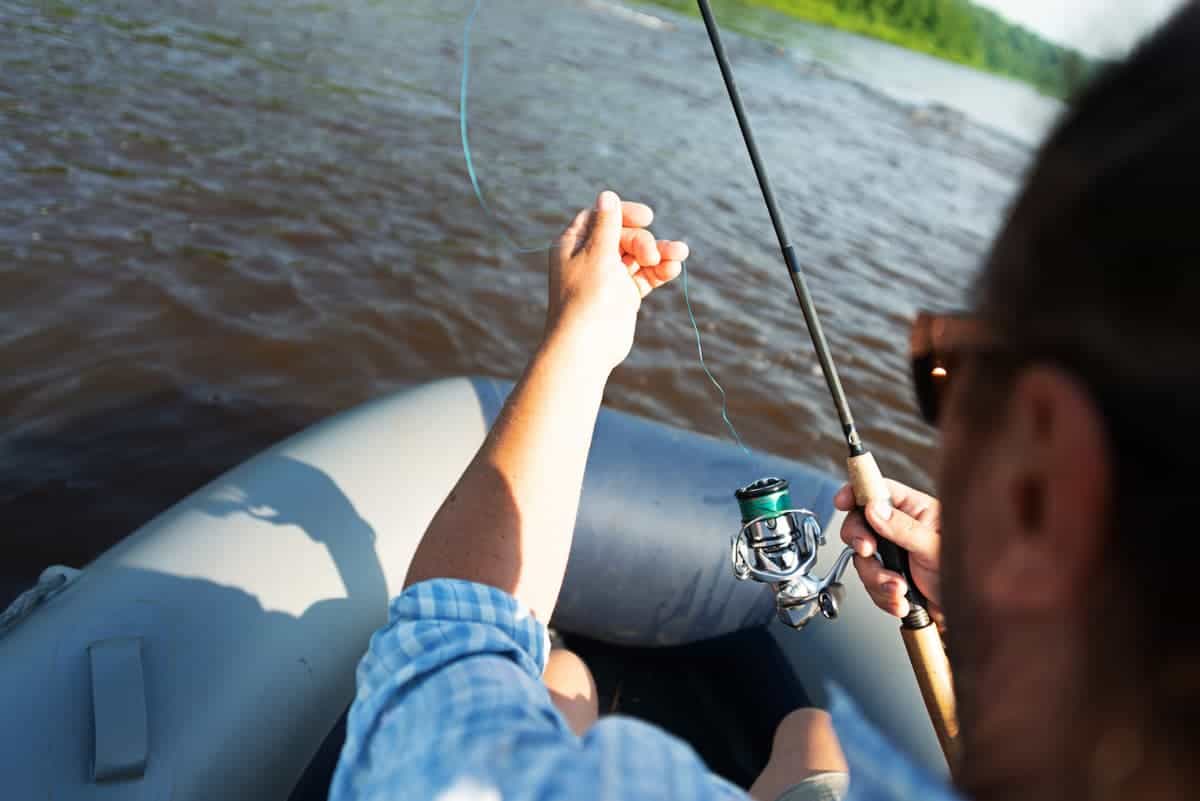Twisted lines are the enemy of many anglers. It’s never fun wasting time undoing knots, jumbled loops and spool loops when you could be fishing – all because of excessive line twists that have formed in the line.
Fortunately, if we follow a few easy tips, like rigging our lures correctly and spooling the right way, we can eradicate almost all line twists.
Here are some sure-thing tips that will help us minimize the line twist we experience before, during, and after we fish.

What Causes Line Twist
At its most basic level, line twist is caused when the lure, bait, or fish is spinning, causing the line to twist on itself.
As you’re bringing in a fish, a portion of the twisted line could have been reeled in. The tension on the line from being spooled and pressure from line wrapping over the line will cause the line twist to be “locked-in.”
When this happens, it could result in the line looping on itself and potentially forming knots.
How To Minimize Line Twist
For better or worse, line twist affects all types of amateur fishing line.
It’s a product of how most manufacturers and stores store their line, how anglers set their rigs up, and how they fish.
With that in mind, this advice applies to all types of lines, even though braided line is the focus.
Rig the Lure Properly
There are ways a lure can cause line twist:
- Plastic baits that have off-center hook insertion
- Lures that collide with debris
- Adding bait to the lure and changing its center of gravity
- Reeling in or trolling too fast and overwhelming the lure
To defeat line twist by lure:
- Center your hooks on plastic baits as much as possible
- Monitor your lures and clear any debris as soon as you notice it
- Do not add bait to a lure or if you do, try and center it as much as possible
- Slow your trolling or rate of speed when reeling in your lure
It is also important to remember that some lures spin naturally, which causes line twist by default.
When that happens, taking a moment and suspending the lure off your rod and letting it unwind on its own is a quick and easy way to get rid of superficial line twist (as opposed to line twist that permeates through your spool of line.)
Use Quality Line
With some sports, you can get away with bargain-basement equipment.
Fishing is not one of them. You may find that gem in the dung-heap, but chances are, you will not. That reality extends to the fishing line you use.
A higher-quality braided line will not fray as easily, lasts longer, casts easier, and is not prone to twist as easily.
Spend a little more on your fishing line; you’ll not regret it, both in terms of the size fish you can land as well as in the overall maintenance of the line throughout its lifespan.
Spool Your Line Correctly
Your reel can cause line twist when spooling if you don’t do it correctly.
If you don’t spool it straight off the manufacturer’s spool onto your reel’s spool in the correct direction, you could create a bit of line twist as you spool your reel.
There is a simple way to address this.
- Place the manufacturer’s spool face up on the floor
- Run the line through at least one of the eyes on your rod and then your reel
- Reel in the line directly above the spool of line
- If the line twists, flip the spool on the floor and reel in until the twist works itself out
Test Your Line
Prevention is worth 10 minutes of aggravation, untwisting or unknotting a line.
To see if your line is significantly twisted, pull off about 18 inches of line and let it hang between your reel and first eye.
If it loops or spins on its own, you have a twist issue going on with the line on your reel.
How to Unwind the Twist
Here is An easy way to get rid of line twist that extends through the spool:
- Put your line without a lure in the water with the bail open
- If you are on a boat, idle forward letting the line unfurl
- If you are on the shore, carefully walk your line off, the line in the water
- Slowly reel in your line letting it untwist as you reel
- Test it again and use this same method a second time
Use Swivels
Swivels let your lure or bait spin while keeping your line straight. This is, by far, my favourite way to ensure that I don’t develop any line twist issues when fishing.
The downside to swivels is that some fish notice them and will not go after your lure. BUT, there is a very simple way to mitigate this concern. Instead of putting your swivel directly on a hook or lure, you should tie a leader line to the swivel instead.
This will create some distance between the swivel and bait, making it harder for fish to notice.
Most fish, however, do not pay attention to whether your line has a swivel on it; if the lure’s action is enticing enough, they will bite.
It is important to match your swivel to your bait.
If you use too light swivels, the lure and existing line twist can overwhelm the swivel and negate its purpose. Follow manufacturer recommendations for the size swivel you should use.

